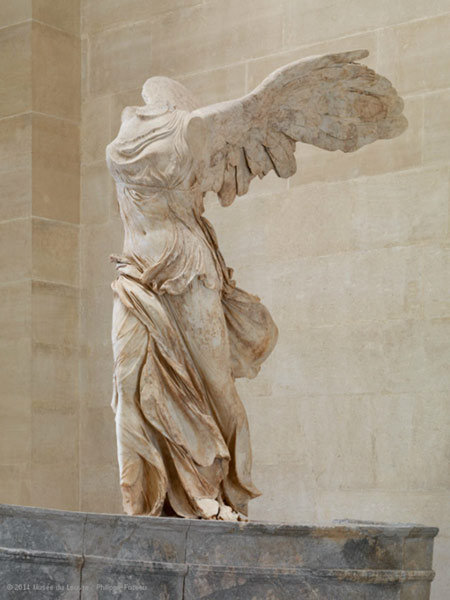One of the most iconic and famous sculptures in history is highlighted during an exhibition that explores its journey from the Greek island of Samothrace to its permanent location in the Louvre, Paris.
While it seems impossible to label anything other than Da Vinci’s “Mona Lisa” as the most famous artwork in the Louvre Museum, Paris, perhaps Lisa’s sculptural counterpart is the renowned “Nike of Samothrace” – or more commonly known as “Winged Victory.” Since the sculpture’s discovery in 1863 by Charles Champoiseau, it has captivated millions of Louvre patrons while undergoing numerous conservation projects, the latest coming in 2014. The most recent attempts to preserve and clean the statue have revealed a stunning level of color in the sculpture’s marble, which could offer scholars new insight into the way the statue was conceived and presented.
“The Winged Victory of Samothrace: Rediscovering a Masterpiece” will begin with a journey to the sculpture’s home – the Greek island of Samothrace. More specifically, the sculpture was discovered within a sanctuary dedicated to great Olympic Gods. The Louvre reports, “From 1863 to the present, successive excavations by French, Austrian, and American teams – some of whose discoveries are highlighted here – have dotted the long path of experts’ attempts to understand the complexity of the creative process behind the artwork. Old photographs and plaster casts document the main stages of the statue’s conservation and display in the Louvre in 1866, 1883, and 1934.”
“The Winged Victory of Samothrace: Rediscovering a Masterpiece” opened on March 5 and will be on view through November 9.
To learn more, visit the Louvre Museum.
This article was featured in Fine Art Today, a weekly e-newsletter from Fine Art Connoisseur magazine. To start receiving Fine Art Today for free, click here.
Victory Gets a New Look








